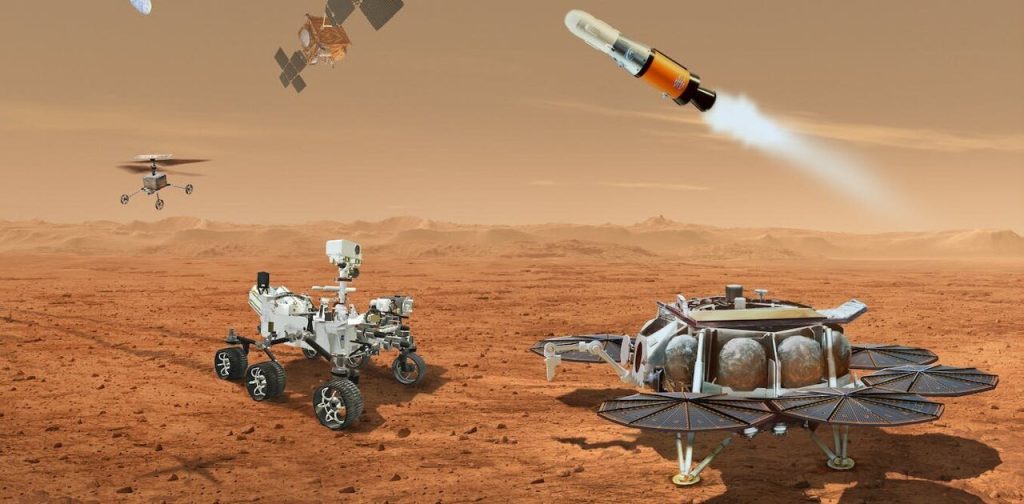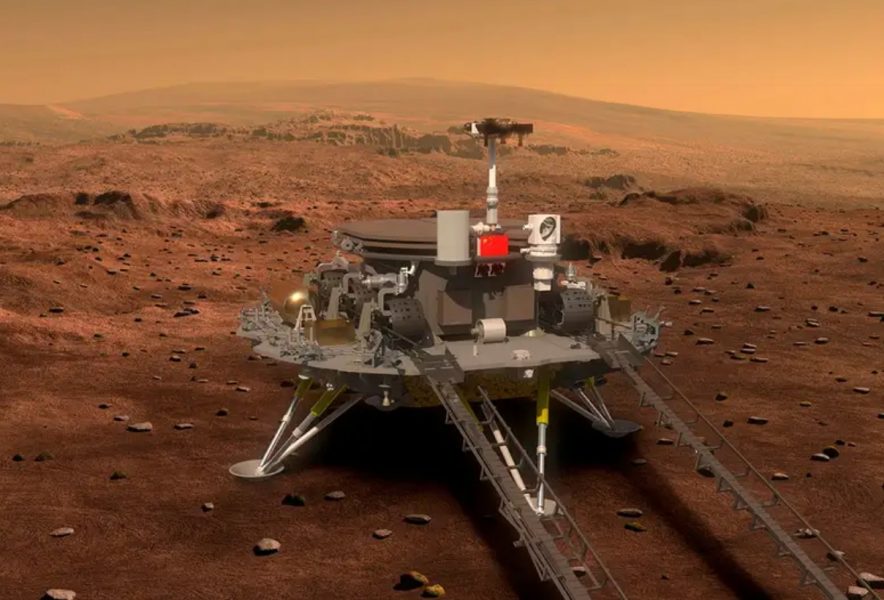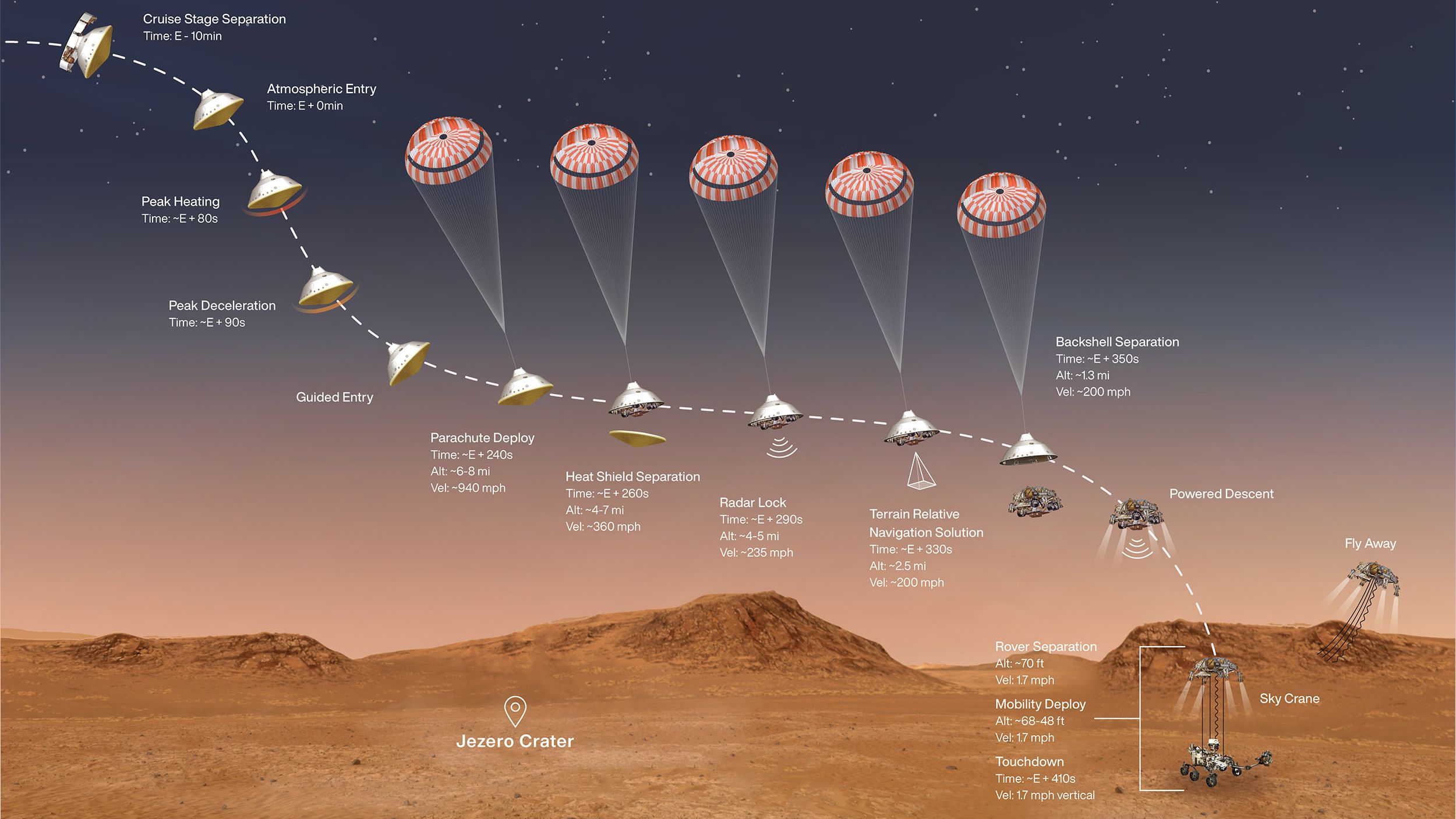The Perseverance rover update has become one of the most searched terms among space enthusiasts and researchers alike. NASA’s Perseverance rover, which landed on Mars on February 18, 2021, has been exploring the Jezero Crater with the goal of uncovering the planet’s geological secrets, searching for signs of past life, and preparing the groundwork for future human exploration. In this in-depth article, we’ll dive into the latest discoveries, mission progress, and what these findings mean for the future of Mars exploration. Stay with Spaceyv
🚀 Mission Overview: Perseverance’s Purpose on Mars
Perseverance is part of NASA’s Mars 2020 mission and represents the most advanced rover ever sent to the Red Planet. Its primary objectives include:
- Astrobiology research: Searching for signs of ancient microbial life.
- Sample collection: Gathering and storing rock and soil samples for future return to Earth.
- Testing new technology: Including the Ingenuity helicopter and systems for producing oxygen from Mars’ atmosphere.
- Preparation for human exploration: Experimenting with life-supporting technologies that could help astronauts in the future.
This rover is a critical step in humanity’s long-term plan to not only study Mars but to eventually send human missions there.

🌌 Latest Discoveries by Perseverance Rover
1. Organic Molecules Found in Jezero Crater Rocks
One of the most groundbreaking Perseverance rover updates is the detection of organic molecules in Martian rocks. These molecules are the building blocks of life as we know it. While their presence does not confirm life, it strongly suggests that Mars once had conditions that could support it.
- Why it matters: Organic molecules are essential for life, and their presence hints that Mars had a more complex chemical environment than previously thought.
- Where found: In sedimentary rocks that formed in ancient lakebeds within Jezero Crater.
2. Evidence of an Ancient River Delta
Jezero Crater was chosen as Perseverance’s landing site because satellite imagery suggested it once contained a river delta. Perseverance confirmed this with on-the-ground evidence:
- Layers of rock resembling river deposits.
- Patterns consistent with water flow and sediment accumulation.
- Strong indications that liquid water existed billions of years ago.
This discovery reinforces the idea that Jezero Crater was once a habitable environment.

3. Carbon-Based Signals in Martian Dust
Perseverance also detected variations in carbon isotopes in Martian dust and soil samples. On Earth, such isotopes are often linked to biological processes, though abiotic (non-life) processes could also explain them.
- Implication: Mars had a dynamic carbon cycle in its past.
- Next step: Determining whether these isotopes originated from biological or geological processes.
4. Oxygen Production from Martian Atmosphere
The rover’s MOXIE experiment (Mars Oxygen In-Situ Resource Utilization Experiment) successfully produced oxygen from carbon dioxide in Mars’ atmosphere. This is a critical breakthrough for future human missions.
- Why it matters: Astronauts on Mars could generate breathable air and fuel from the atmosphere instead of carrying everything from Earth.
- Result: MOXIE produced oxygen multiple times, proving sustainability.
5. Ingenuity Helicopter Achievements
The Perseverance rover update would be incomplete without mentioning Ingenuity, the small helicopter carried by Perseverance. Originally designed for just a few test flights, Ingenuity has exceeded expectations:
- Completed over 60 successful flights.
- Demonstrated that aerial exploration is possible in Mars’ thin atmosphere.
- Provided aerial reconnaissance to guide Perseverance’s path.
This achievement sets the stage for future aerial vehicles on Mars.

6. Unique Rock Formations and Minerals
Perseverance discovered a variety of rock types, including igneous rocks formed from volcanic activity and sedimentary rocks created by ancient water flow.
- Igneous rocks: Help scientists understand Mars’ volcanic history.
- Sedimentary rocks: Preserve potential biosignatures and records of ancient water.
7. Sample Caching for Future Missions
Perhaps the most exciting update is that Perseverance has successfully collected and stored samples in sealed tubes. These will eventually be returned to Earth through the planned Mars Sample Return mission.
- Current status: Multiple tubes filled with rock cores.
- Significance: This will allow scientists to study Martian material in Earth laboratories with advanced tools.

🔬 What These Discoveries Mean for Mars Exploration
Each Perseverance rover update brings humanity closer to answering the question: Did life ever exist on Mars? The evidence of organic molecules, river deltas, and preserved sedimentary layers strongly suggests Mars was once a habitable planet.
These findings also pave the way for:
- Future human missions: Oxygen production and aerial reconnaissance are vital technologies for astronauts.
- Astrobiology breakthroughs: If biosignatures are eventually found, it would transform our understanding of life in the universe.
- Global cooperation: Mars exploration has become a multi-national effort, with NASA, ESA, and other agencies collaborating on sample return missions.
📅 Perseverance Rover Update Timeline
Here’s a brief timeline of key events and discoveries since landing:
| Date | Event | Discovery/Highlight |
|---|---|---|
| Feb 18, 2021 | Landing in Jezero Crater | Began mission in ancient river delta |
| April 2021 | Ingenuity first flight | First powered flight on another planet |
| Sept 2021 | First rock core collected | Start of Mars sample caching |
| Dec 2021 | Organic molecules found | Detected in Jezero Crater rocks |
| 2022–2023 | Multiple samples cached | Sedimentary and igneous rock cores |
| 2023 | MOXIE oxygen test | Produced oxygen from Mars’ atmosphere |
| 2024–2025 (ongoing) | Continued exploration | Expanding search for biosignatures and preparing samples for return |
🌍 The Bigger Picture: Why Perseverance Matters
Perseverance is not just a rover—it’s part of humanity’s greatest scientific quest: to determine whether we are alone in the universe. Every Perseverance rover update represents a step closer to unraveling Mars’ mysteries and laying the foundation for human presence on the Red Planet.
- If life existed on Mars, even in microbial form, it would mean life can arise independently in multiple places in the universe.
- If life did not exist, it helps us understand why Earth is unique and what conditions are truly necessary for habitability.

📌 Key Takeaways
- Perseverance has discovered organic molecules, confirming Mars had the building blocks for life.
- The rover provided solid evidence of an ancient river delta in Jezero Crater.
- Carbon isotopes in dust hint at a dynamic carbon cycle.
- MOXIE produced oxygen, a vital step for human exploration.
- Ingenuity helicopter proved aerial exploration is possible.
- Perseverance has begun caching samples for future return missions.
🔮 What’s Next for Perseverance?
The mission continues with the rover exploring more diverse terrain and collecting additional samples. Future updates will likely focus on:
- Analyzing deeper sediment layers.
- Continuing oxygen production tests.
- Mapping more potential biosignature sites.
- Preparing samples for NASA-ESA’s Mars Sample Return mission in the early 2030s.

Conclusion
The Perseverance rover update highlights how far we’ve come in planetary exploration. From organic molecules and river deltas to oxygen production and helicopter flights, every discovery adds to the excitement of unraveling Mars’ mysteries. Perseverance is not just exploring another planet—it’s paving the way for the future of humanity beyond Earth.
Sources



